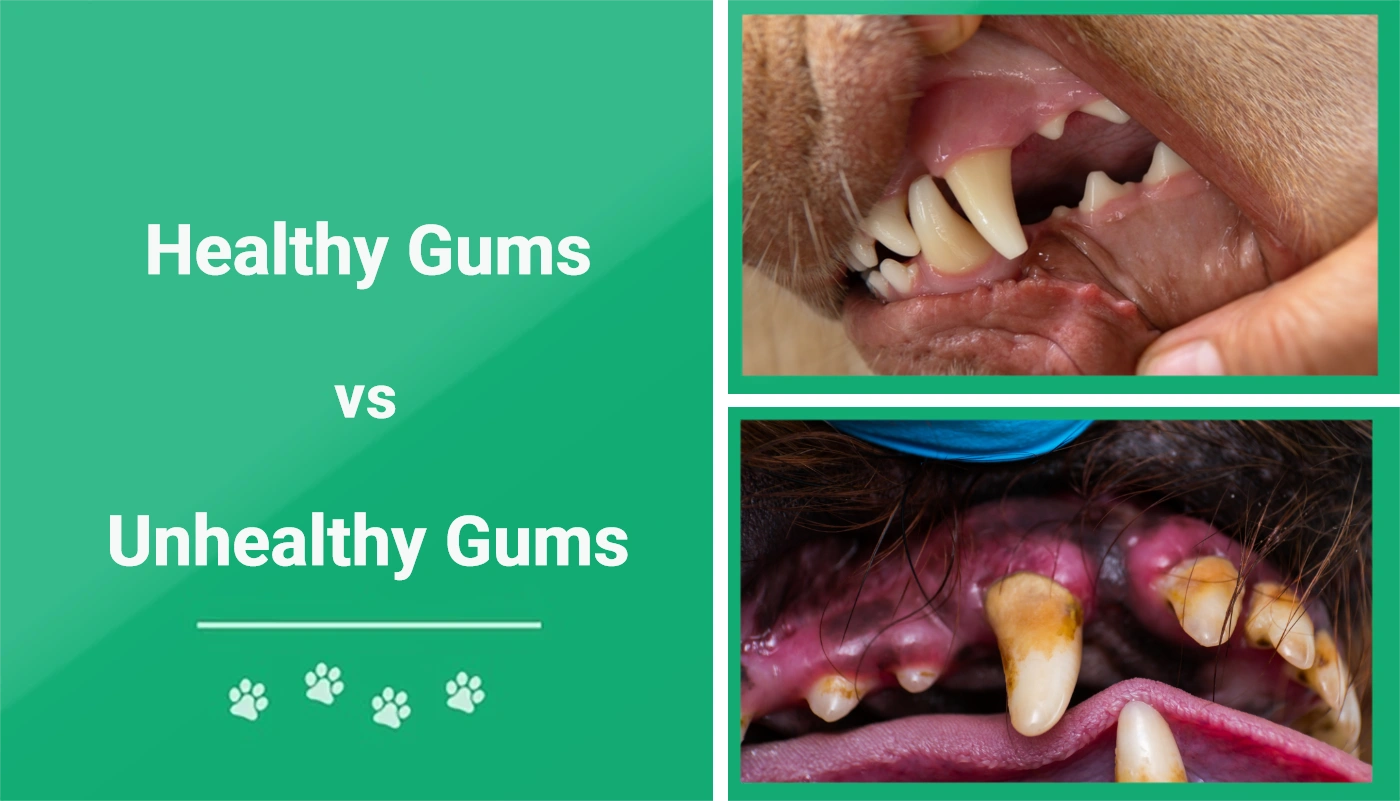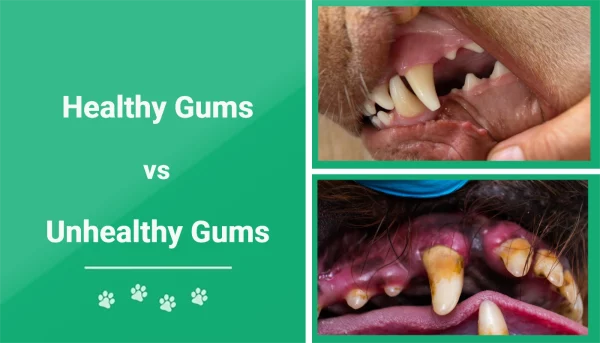Click to Skip Ahead
Your dog’s gums aren’t just a place for their teeth to anchor (although they are that too.) Maintaining your dog’s gums is vital to its overall health and dental condition. In this article, we’ll compare healthy dog gums with unhealthy ones. You’ll learn what to look for when checking your dog’s gums and what you can learn about their health when you do.
At A Glance
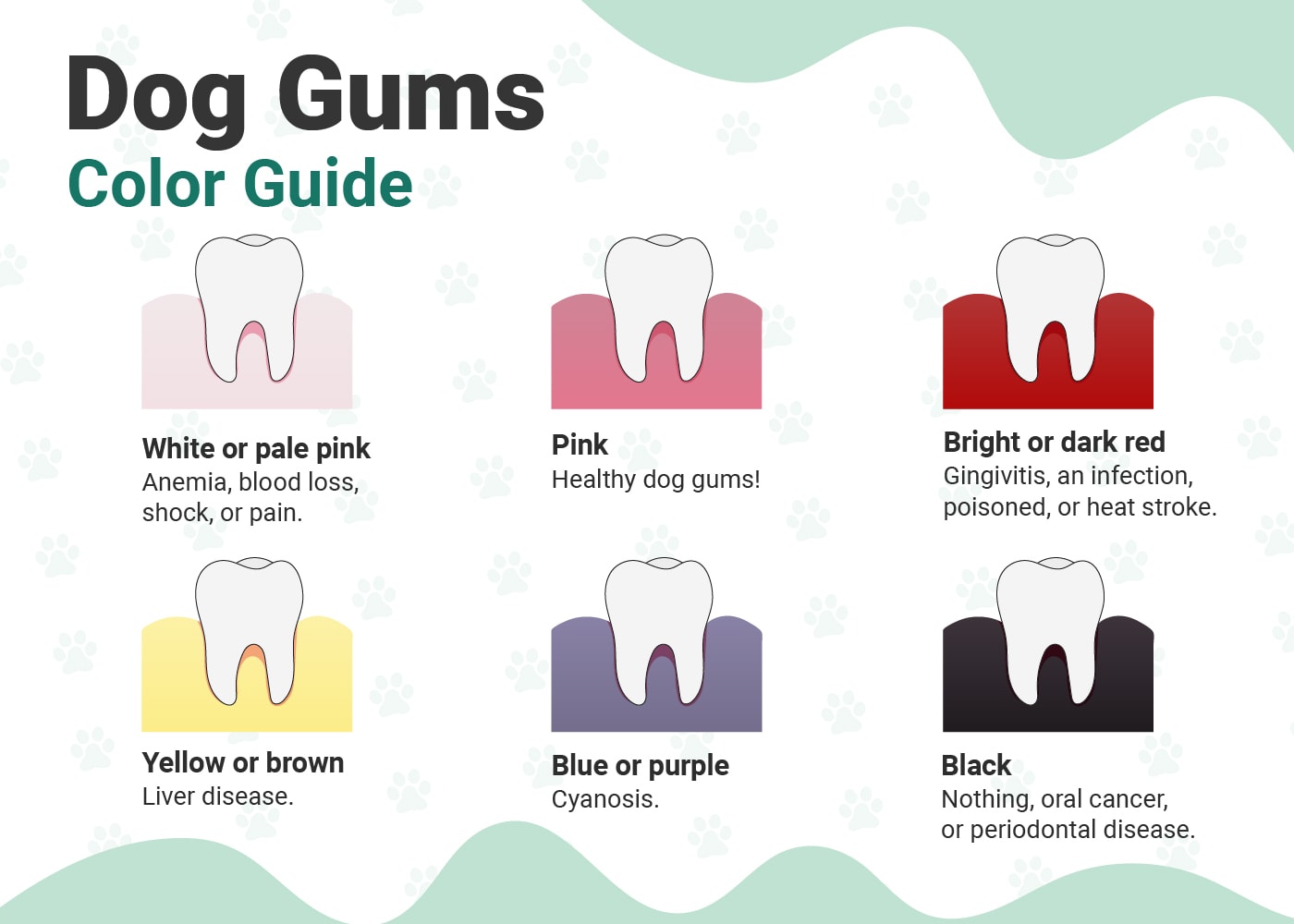
- Pink, sometimes with permanent darker areas
- Moist, but not overly wet
- Smooth, no lumps, bumps, or sores
- Odor-free
- Bright red, yellow, pale, bluish
- Dry or sticky
- Sores, lumps, or abnormal gum line
- Strong odor
Overview of Healthy Dog Gums
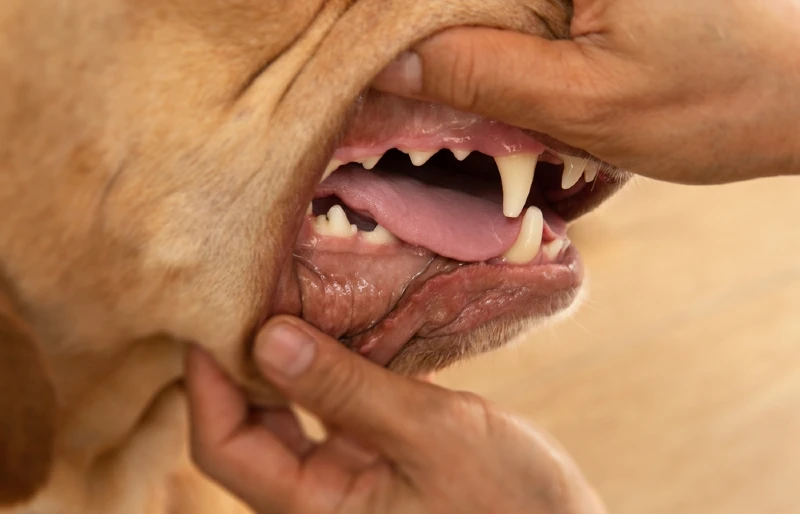
Color
Healthy dog gums are typically pink in shades ranging from light to bright. Some dogs may have a few dark spots naturally occurring on their gums. Other breeds may have dark gums. If your dog has these color variations, they should be present routinely. Sudden color changes, new spots on the gums, or even gradual changes over time are different stories.
Even healthy dog gums will lighten in color if you press them with your finger. However, the normal pink color should return in about 2 seconds or less. Any longer could be a cause for concern.
Feel
Healthy dog gums should feel moist to the touch. If you rub your finger along your dog’s gums, it should slide easily. Some dog breeds produce more saliva than others, but that’s not what you’re looking for here. The gums themselves shouldn’t be coated in saliva. In fact, excessive drooling or saliva production isn’t normal either.
Texture
Healthy dog gums should be relatively smooth. You shouldn’t notice any visible lumps, growths, bumps, or swollen areas. Some naturally hard or bumpy areas will be present where your dog’s teeth attach to the gums. Healthy dog gums should be unbroken by any sores or cuts either.
Smell
Healthy dog gums and mouths shouldn’t have an odor. Sometimes, the smell of your dog’s mouth will change based on what they’ve been eating and how disgusting it is. Overall, the scent from healthy dog gums should be minimal or non-existent.
Overview of Unhealthy Dog Gums:
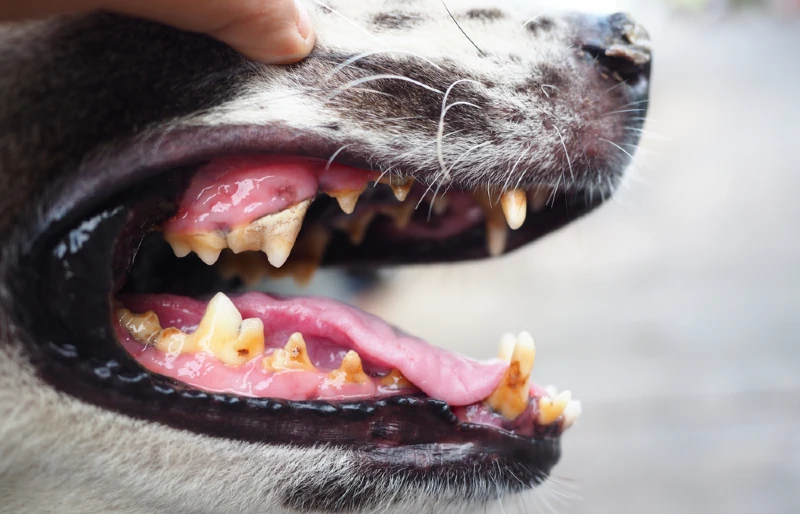
Color
Several colors can be found in unhealthy dog gums, all of which point to different medical problems with your dog. Redness and inflammation around the base of your dog’s teeth may indicate gingivitis or infected gums. Bright red gums, on the other hand, could reveal that your dog has been poisoned or is suffering from heat stroke.
Pale or white gums can signify anemia, blood loss, shock, or pain. Yellow gums and a similar tinge to the skin and eyes may be a sign of liver disease. If your dog’s gums are blue, grayish, or purple, they could indicate your pup is having trouble breathing and a lack of oxygen in their bloodstream.
New spots on your dog’s gums, typically reddish in color, are also a sign of unhealthy gums. They may indicate a blood clotting issue, especially if you notice similar spots or bruises elsewhere on your dog’s skin.
Most of the time, if your dog’s gums turn any of these colors, you’re dealing with a medical emergency that requires going to the veterinarian immediately.
Feel
Unhealthy dog gums may feel dry or sticky to the touch. Your finger won’t glide easily if you rub it along the gums and it may get stuck. Sticky or dry gums are frequently a sign that your dog is dehydrated and needs medical attention.
Texture
Unhealthy dog gums aren’t smooth but may contain various lumps, bumps, and growths. There may be visible sores and cuts. They may also be swollen. Sometimes, you’ll notice your dog’s gum line receding or pulling away from the normal tooth location. Some dogs deal with the opposite issue, with an overgrowth of the gums.
Odor
Unhealthy gums smell unpleasant. The odor may be coming from the gums due to plaque, tartar, and dental disease. Sometimes, your dog’s mouth may smell differently due to a medical condition like kidney disease.
Keeping Your Dog’s Gums Healthy
How Often Should You Check the Gums?
Try to take a good look at your healthy dog’s gums at least once per week. To simplify this process, get puppies used to having their mouth handled and checked when they’re young. Examine the gums for any signs of unhealthy gums we discussed. This is usually easiest to do when your dog is relaxed and calm. Offer your dog a treat or reward once the gum examination is over to build a positive association in their mind.
Dental Health
Help keep your dog’s gums healthy by practicing regular dental health. Brush your dog’s teeth frequently, ideally every day. Again, dental health routines should be part of your puppy’s early training and socialization. If you’re struggling to brush your dog’s teeth, you can use dental wipes and chews, but brushing is more effective.
Even if you brush daily, most dogs will eventually develop a dental disease as they age. Your vet may talk to you about having your dog’s teeth cleaned. Dental disease can allow bacteria to enter your dog’s bloodstream and travel to other areas of the body, potentially causing infection.
Protect the Gums
Be careful about letting your dog chew on any object that could injure its gums. Sharp sticks or rocks could both cut your dog’s gums. Sticks could break off and get stuck somewhere in your dog’s mouth. If your dog has sore or inflamed gums from dental disease, chewing hard toys or bones may cause them to bleed.
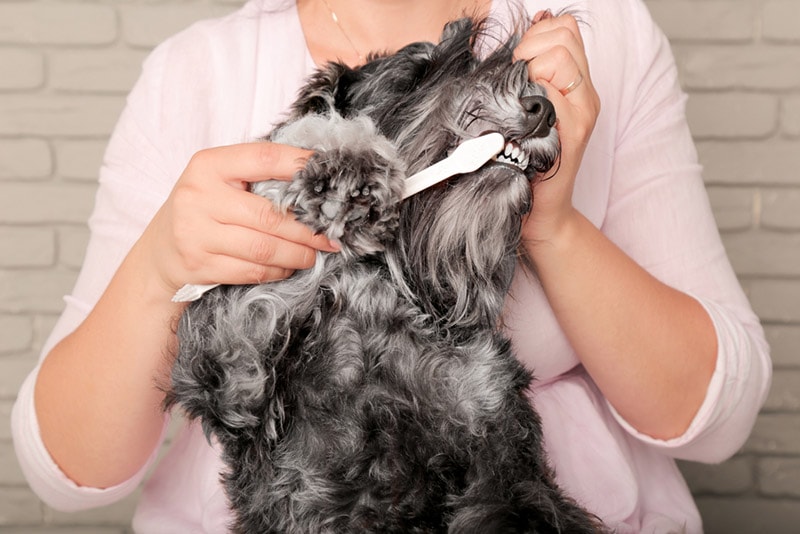
Conclusion
Because dogs can’t talk to tell us if they’re feeling sick or hurt, we must learn how to navigate the clues they give to their general health. Your dog’s gums offer just one of those indicators. Now that you know the difference between healthy and unhealthy dog gums, you’re better prepared to determine whether something is wrong with your pup. Anytime you’re worried about your dog’s gums or anything else, don’t hesitate to contact your veterinarian.
Featured Image Credit: Top – Healthy Dog Gums (9gifts, Shutterstock) | Bottom – Unhealthy Dog Gums (Todorean-Gabriel, Shutterstock)

